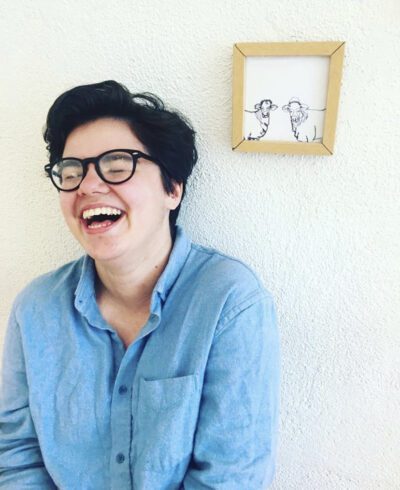The Color Purple (2023) is based on Alice Walker’s 1982 novel, which was adapted into a movie, directed by Steven Spielberg, in 1985. The story was then turned into a Broadway musical in 2005 and revived in 2016. Director Blitz Bazawule’s adaptation isn’t a remake of the 1985 movie, but the first time the Broadway version of the story will make it onto the big screen. However, if the audience wasn’t already aware there was a musical version of The Color Purple, this might not be the best introduction to the songs.
The epic story centers on two sisters, Celie and Nettie, and follows them from their adolescence in 1908 to adulthood in the 1940s. Young Celie (Phylicia Pearl Mpasi) and Nettie (Halle Bailey) are torn apart by their abusive father (Deon Cole). They’re further separated when Mister (Colman Domingo) marries an older Celie (Fantasia Barrino) and bans Nettie (Ciara) from ever returning to his house. As Celie begins this new chapter of her life with Mister, she meets Shug Avery (Taraji P. Henson), a jazz singer who has a long history with Mister. However, it’s Celie and Shug who grow closer together while Mister fades into the background.
The performances, especially during a musical number, in The Color Purple give the impression that the actors are consciously aware they’re in a film. It’s as if they’re performing for the camera rather than existing in the moment and the world of the film. This creates a chasm between the audience and the character and adds a sheen of inauthenticity to the movie. There’s always a level of disbelief one has to have when watching actors perform, especially when bursting into song and dance is completely ordinary in their world. If it’s done well, the audience is eager to go along with the illusion. Unfortunately, these musical numbers felt more like music videos. The actors often sing directly into the camera and emote in a way that feels insincere. This style likely speaks to director Bazawule’s music background, but it doesn’t work tonally for The Color Purple. Each musical moment feels like a deviation from the film, rather than a natural progression of it.

Perhaps the most glaring example of the musical problem is Celie’s showstopper “I’m Here.” In the Broadway show, this is a slowly building, triumphant song. The sort of 11 o’clock number musicals are known for. I was lucky enough to see Cynthia Erivo play the role of Celie in 2016, and her performance of this song spurred not one, but two mid-song standing ovations. That power was missing in the film’s version. The first thirty seconds were cut and the pace was far too quick to allow this version to blow the roof off the theater. Even when Erivo performs the song out of the context of the musical, she embodies the emotional depth of this moment. She may be in front of a crowd, singing at an event, but it never feels artificial.
One might assume that this new movie is a direct adaptation of the Broadway show, but it barely even feels like a musical. The songs are few and far between, especially during the second half of the runtime. A plethora of numbers from the original show were cut (“African Homeland” and “The Color Purple” being notable omissions) and a new song was shoehorned in as an attempt to get a Best Original Song nomination.

It’s disappointing that the film decided to deviate from the Broadway show, because the heart of the source material is missing. Even Danielle Brooks, who originated the role of Sofia in the Broadway revival and reprises her role in the movie, doesn’t seem to be able to hit her stride. In her big number, “Hell No!,” it’s clear that she’s being held back by the music-video style of the choreography. With singers like Brooks and Bailey, it would have been thrilling to employ an on-set singing technique similar to that of Spielberg’s West Side Story. Obviously, the bigger, dance-heavy numbers would need a studio version, but giving these performers the chance to sing live could have added a much-needed grittiness to the musical numbers. Instead of perfect, studio-quality songs, offer the awkward breathing and the raspiness that come from a live performance. It’s an electricity the film desperately needed.
As with the 1985 film adaptation, the queer storyline takes a backseat. If an audience member went to the bathroom for five minutes, they might never know that Celie and Shug were romantically involved. While the Broadway musical doesn’t make this relationship the central focus either, there are quite a few songs (omitted from the movie) that are about Shug and Celie’s emotions for each other. In Walker’s novel, their relationship is integral to the plot. It’s the first time Celie feels beautiful and experiences romance. Her relationship with Shug is a stepping stone to self-acceptance and a reminder that she has an inner worth. In this film adaptation, the two share only one kiss, and their relationship is never mentioned again.

The Color Purple is a magnificent character study of a woman coming of age in the early 1900s. There’s a reason Walker’s work endures forty years after it was initially published. This adaptation had the opportunity to capture the magic of the stage production and share it with a larger audience, but the story never fully came together. There are far too many sun flares that distract from the actors’ faces, the performances are awkwardly lip-synced, and some of the best songs are missing. The Color Purple is an essential story, one that has not yet received the motion picture treatment it deserves.




